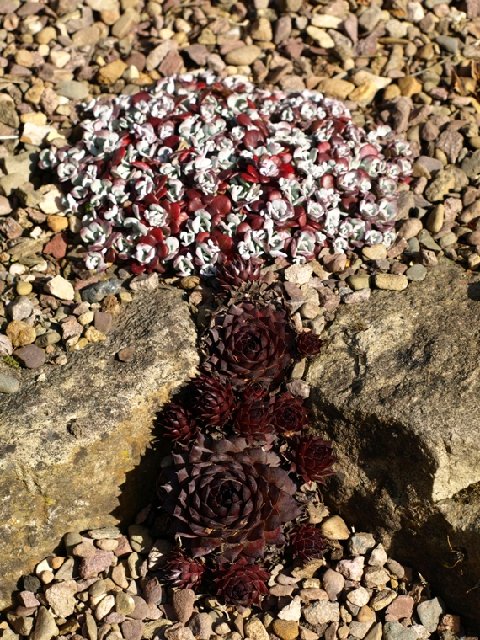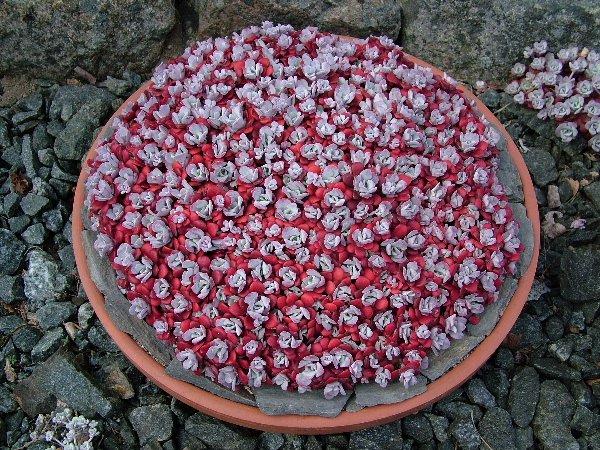Authors:
Compactly hummock-forming to 30cm or more across by about 5cm high. Leaves spathulate, pale green, somewhat glaucous, flat, 2 by 1cm. Inflorescences to 10cm high, usually with several branching cymes. Flowers to 1.2cm wide, yellow, five-petalled. British Columbia to central California in dry rocky sites. The type species is not common in cultivation as it is not as colourful as some of the regional variants and cultivars. S.s. 'Aureum' is a highly colourful cultivar with an overall yellow hue in spring, changing to orange then red as summer progresses, but often all three colours grade into each other. A larger, more succulent plant than the type species but not hardy, at least in the north, though fine in a frame. Flowers up to 2cm across. S.s. 'Carnea' is about the same size as the type species but the leaves are more pruinose and succulent and edged with red. S.s. subsp. pruinosum is larger than the type species and very pruinose. The inflorescence is almost spherical. 'Cape Blanco', often mis-named 'Capa Blanca' and other variants belongs to this subspecies and has small, 2.5cm tight rosettes of pruinose, silver-grey, leaves forming a very compact, low hummock. Fully hardy and highly recommended. Found on Cape Blanco on the Oregon Coast. 'Carnea' has leaves tinted crimson or vermilion. 'Majus' is similar but larger with hemispherical inflorescences. 'Purpureum' is also relatively larger, the leaves turning purple in dry conditions. 'Roseum' has permanently rose-coloured leaves. A rarely seen cultivar described by Evans. 'William Pascoe' is almost identical to 'Carnea' but the red suffusion is more pronounced in the lower leaves.


Sign up for our newsletter to receive our monthly update direct to your inbox. Featuring our latest articles and news.
Built by Atomic Smash

